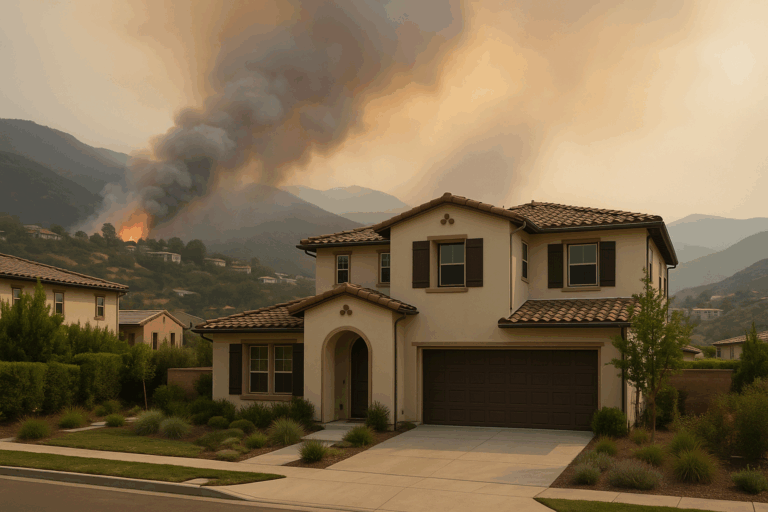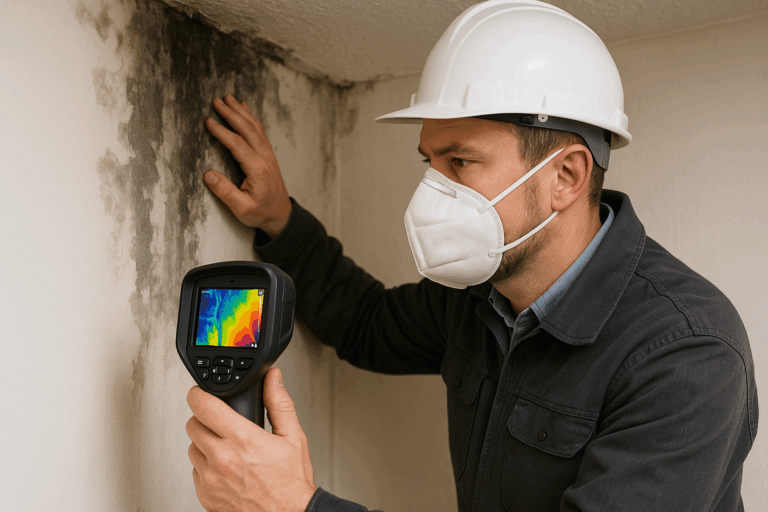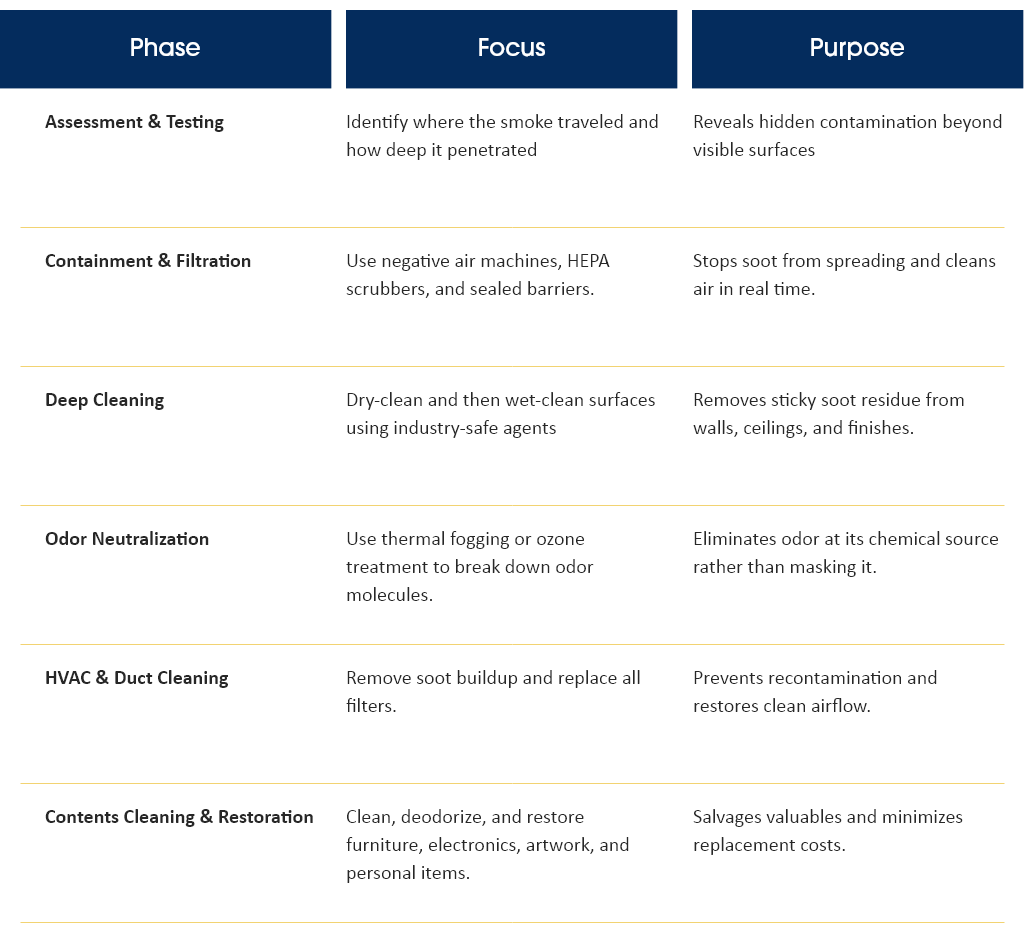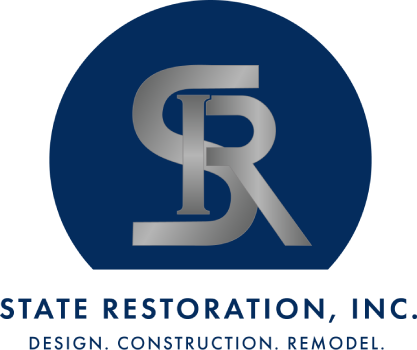Blog / Steps to Take When Your Home Is Exposed to Smoke & Soot Damage
Steps to Take When Your Home Is Exposed to Smoke & Soot Damage (and How to Prepare and Prevent Smoke Damage in the First Place)
During wildfire season, smoke doesn’t even have to reach your property line to cause damage. Even miles away, microscopic smoke and soot particles can infiltrate your home, leaving behind odor, residue, and health risks that can linger long after the air clears.
This guide walks you through three essential stages:
- How to prepare your home before smoke exposure
- What to do immediately after smoke or soot enters your home
- When to call professionals to restore your space
I. Preparing Your Home for Smoke and Soot Exposure

Preparing for California’s fire season can mean the difference between light cleanup and serious indoor contamination. Smoke travels unpredictably, and fine soot particles can enter through the smallest openings. Prevention involves sealing and filtering.
1. Seal and Protect Your Home
- Inspect and weatherstrip doors and windows to reduce outside air leaks.
- Close fireplace dampers and cover vents when fires are nearby.
- Use temporary vent covers for any attic or crawl space openings during smoke events.
- Check around rooflines, recessed lighting, and wall penetrations for gaps where smoke may enter.
2. Upgrade Filtration Before Fire Season

- Install MERV 13 or higher-rated air filters in your HVAC system. These can trap finer particles than standard filters. Replace your filter every 90 days, or every 30 days after a smoke event or construction.
- Use HEPA air purifiers in bedrooms, living rooms, and home offices to reduce airborne particulates.
- When outdoor air quality declines, close windows and doors and run purifiers on high to maintain clean indoor air.
3. Create a “Clean Room” for Heavy Smoke Days
4. Protect and Document Your Valuables
- Photograph and document valuable items before fire season. We recommend updating your list once every year and saving it digitally to the cloud. If you ever need to file a claim, having detailed photos and descriptions helps justify itemized line items for cleaning, restoration, or replacement.
- If smoke is near and you have time to prepare, wrap furniture, art, clothes, or other high-value or porous items in plastic sheeting or clean cotton covers. Avoid old bedsheets, as smoke particles can penetrate fabric easily.
II. When Smoke and Soot Enter Your Home
If your home has been exposed to wildfire smoke or a nearby structure fire, take action as soon as it’s safe. Even if you don’t see flames, soot and smoke residue can embed into walls, insulation, and HVAC systems.
1. Start with Safety
- Wait for clearance from local officials before re-entering recently affected areas.
- Wear an N95 mask when cleaning or inspecting soot; these particles can irritate lungs and skin.
- Keep children and pets away from smoky zones until air quality improves.
2. Prevent Cross-Contamination
- Turn off HVAC systems immediately. Running them can spread soot through ducts and vents.
- Isolate affected rooms by closing doors and using plastic sheeting.
- Avoid walking from contaminated to clean areas, as soot easily transfers to shoes and clothing.
3. Begin Gentle, Surface-Safe Cleaning
- Use dry cleaning sponges or microfiber cloths to gently lift soot from surfaces; avoid using water until you know the material type.
- Once outdoor air improves, open windows briefly to ventilate.
- Launder washable items separately; smoke residue can spread in mixed loads.
- Replace air filters immediately after a smoke event; clogged filters continue recirculating contaminants.
4. What Not to Do
- Don’t use a household vacuum without HEPA filtration because this can release soot back into the air.
- Avoid heavy scrubbing, it can push soot deeper into paint, fabrics, or drywall.
- Skip odor-masking sprays or candles. They don’t neutralize odor and can react chemically with smoke residue.
III. Professional Smoke & Soot Restoration: When to Call for Help

Even light smoke exposure can leave microscopic contamination in HVAC systems, insulation, and behind walls. Professional restoration ensures thorough removal and safe indoor air.
Here’s what a complete process typically includes:

IV. Long-Term Protection After Cleanup
After cleanup, ongoing maintenance helps prevent future problems:
- Replace air filters every 3 months.
- Schedule duct cleaning once a year if you live near an active wildfire zone.
- Use indoor air quality monitors to detect rising particulate levels early.
- Reseal and repaint with low-VOC, washable coatings to reduce future absorption.
- Maintain defensible space outdoors by clearing dry brush within 30–100 feet of your home.
V. When in Doubt, Get a Professional Assessment
If your home still smells smoky, feels dusty, or you notice irritation when indoors, there’s likely residual smoke or soot contamination. Getting a professional evaluation ensures nothing hidden gets overlooked.
State Restoration offers on-site inspections, air quality testing, and complete smoke & soot remediation services throughout Malibu, the Palisades, Ventura County, and Greater Los Angeles.
Whether you’re dealing with a recent wildfire, an isolated incident, or simply want peace of mind, we’re here to help you restore clean air and a sense of home again.
Our Client’s Experiences Working With State Restoration
“Darlene and the whole staff at State Restoration were fantastic. They cleaned my whole house that had smoke damage from the Palisades fire. I must say the house is as clean now as the day we moved in. They swarmed our house with a very professional crew and cleaned it top to bottom outside and inside and all soft goods. Top notch in every detail. I spoke with 3 other companies and State was far and away the best. Thank you Darlene!!”
“We had some very bad chemical smell in our home and on furniture after the wildfires. Darlene and her team came in and truly went top to bottom and got rid of all the odors in a very quick order. Can’t recommend them highly enough!!”
Need a smoke damage consultation? Call our team today.
